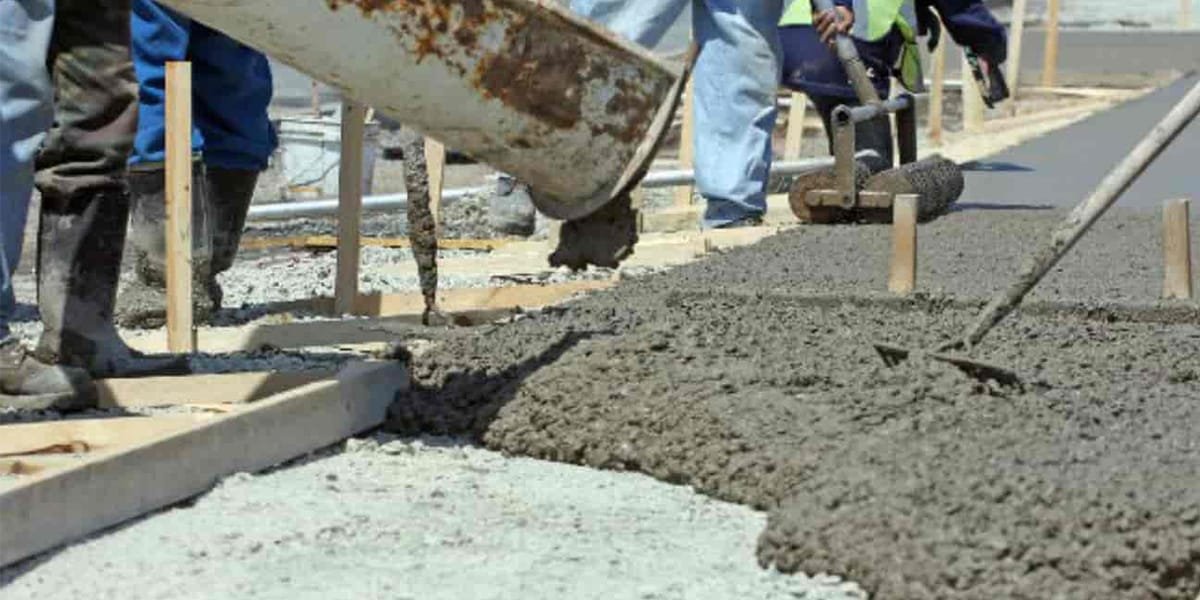
01 Mar Concrete Mix Ratio: Understanding Definition, Types, And Method?
Each construction type needs a specific concrete mix ratio. To achieve the right strength and quality. In this guide, we will simplify the concepts and types of methods for concrete mix ratios.
The concrete ratio is a proportion of cement, sand, and aggregate mixed to form concrete. There are three main types of concrete mix ratios. They vary in strength, workability, and durability. The methods include careful measurement and mixing of concrete ingredients.
Want to know more about the significance of the concrete mix ratio? Continue reading this to ace your next construction project.
What Is a Concrete Mix Ratio?
Concrete is made of four ingredients:
- Cement
- Sand
- Coarse aggregate
- Water
The concrete mix ratio is the amount of each ingredient. The ratio is expressed in numbers, for example simple concrete ratio is defined as 1:2:3, which means:
- 1 part of cement.
- 2 parts of sand.
- 3 parts of coarse aggregate.
The mix ratio defines the strength, workability, and durability of concrete. Too much water results in weak concrete and cracks.
Types of Concrete Mix Ratios
There are three main types of concrete mix ratios. We will explain each one of them in detail.
Nominal Mix
A nominal mix is a fixed ratio of concrete ingredients. Nominal mix concrete is ideal for small and noncritical projects, such as sidewalks. This concrete mix does not require customization or lab testing. For example, M15 grade concrete is a nominal mix with a ratio of 1:2:4.
Concrete grades from M5 to M20 come under the category of nominal mix. The nominal mix is not ideal for bigger or load-bearing projects. This mix can be adjusted according to water content.
Design Mix
Design mix is an advanced and customized ratio. The amount of concrete ingredients is not predefined. They are calculated according to the needs and requirements. Engineers carefully evaluate the quality of concrete ingredients. It determines their proportions to achieve the desired strength, workability, and durability of concrete.
In addition to the four main ingredients, admixtures improve the quality of the design mix. This mix is ideal for critical, larger, and load-bearing constructions.
Standard Mix
The standard mix follows specific national and international standards. Its ingredient ratios are set by IS (Indian Standards), ASTM (American Standards), or British codes. On the other hand, the design mix is more precise and customizable. It’s ideal for particular projects. The standard blend, however, is less flexible.
Common Concrete Mix Ratios and Their Applications
In this section, we will discuss common types of concrete ratios and their applications.
1:2:3
1:2:3 concrete mix ratio contains:
- 1 part of cement.
- 2 parts of sand.
- 3 parts of coarse aggregate.
This concrete mix ratio is ideal for small projects such as patios and sidewalks. This mix ratio has strength for everyday application. However, this mix ratio is not ideal for load-bearing constructions. The 1:2:3 mix ratio comes under the category of nominal mix.
1:1.5:3
1:1.5:3 concrete mix ratio contains:
- 1 part of cement
- 1.5 parts of sand
- 3 parts of coarse aggregate
This mix ratio has a higher content of cement as compared to a 1:2:3 ratio. The higher cement content provides more strength to concrete. This mix ratio is ideal for low-rise buildings and construction elements such as slabs.
1:1.5:3 Concrete mix ratio comes under the category of standard mix. This mix ratio has a concrete grade of M20 or M25.1:1.5:3 mix is not ideal for projects such as high-rise buildings.
1:3:6
1:3:6 concrete mix ration contains:
- 1 part of cement.
- 3 parts of sand.
- 6 parts of coarse aggregate.
1:3:6 Concrete mix ratio comes under low-strength concrete. This mix ratio is ideal for site proportion, for example, sub-bases. This mix is used in non-structural projects when strength is not needed. This mix ratio comes under the category of nominal mix ratio.
1:4
1:4 concrete mix ratio contains:
- 1 part of cement.
- 4 parts of sand.
This mix ratio does not come under the category of concrete mix. However, it is used in construction projects to provide adhesive strength. It is used for binding construction materials such as bricks.
Methods for Preparing a Concrete Mix Ratio
It is important to follow the right methodology to prepare a concrete mix ratio. Let’s discuss this methodology in detail.
- Measurement
To prepare a concrete mix ratio, measure all the ingredients carefully. Use tools such as buckets and shovels. Measure each component of the concrete mix for the correct concrete mix ratio. The exact mix proportion should be followed, whether it is a nominal mix or a designed mix.
- Mixing
After measuring the ingredients, mix all the dry ingredients. If the mixing is done by hand, then spread the dry ingredients and mix them with a shovel. If the mixing is done using a blender, then ensure all dry ingredients are well blended before adding water. The key step is to mix all dry ingredients before adding water.
- Adding Water
Water plays a vital role in the strength and workability of concrete mix. Too little water can create a concrete hard to work with. Whereas too much water can decrease the strength of cement. Usually, the ratio of dry ingredients defines the water content. It is important to maintain a stable water-to-cement ratio for an effective concrete mix ratio.
- Testing
Test your concrete mix ratio before finalizing the mix. Slump tests can check the consistency of the concrete mix. Compressive strength tests can check the strength of concrete for critical projects.
Factors Influencing the Mix Ratio
The type of concrete mix ratio depends upon purpose, strength requirement, environment, and available material. Let us discuss these factors in detail.
Type of Construction
There are two main types of constructions–load bearing and nonload bearing. Load-bearing construction should be strong, workable, and durable. The non-load-bearing construction often requires less strength and durability. The construction type decides the ratio of concrete mix ingredients.
Strength Requirements
The strength requirement also affects the proportion of material in the concrete mix. For instance, a high-rise building requires a strong, workable, and durable concrete mix ratio.
Environment
The environment of the construction site plays an important role in the concrete mix ratio. For example, corrosion corrosion-resistant concrete mix will be designed for sites with chemical exposure.
Materials Available
The availability and quality of concrete material also influence the concrete mix ratio. For example low amount of high-quality cement will provide good strength. The particle size of sand and the type of coarse aggregate influence the quality of the concrete mix ratio.
Tips for Choosing the Right Concrete Mix Ratio
The selection of the right concrete mix is necessary for successful construction. Let us look at some of the practical tips for selecting the right concrete mix.
Consider the Purpose
Understand the purpose of your construction. Is it a load-bearing or non-load-bearing construction? What is the expected durability? What is the temperature of the site area? These questions will help you understand the purpose of your construction. And you will select the right concrete mix ratio.
Use Quality Materials
Use high-quality material for the right concrete mix ratio. Make sure the cement is of high quality. The sand has fine particles. The coarse aggregate is clean. High-quality material results in good-quality concrete mix.
Follow Standards
Do not experiment with your concrete mix ratio unless you are professional. Follow local or international standards. This will save you time and money.
Test the Mix
Always test the mix before finalizing it. It is a good practice that prevents mishaps and construction delays. Use different tests to check the quality of your concrete mix ratio.
Conclusion
The concrete mix ratio is the amount of each ingredient to make an effective concrete. There are different types of concrete mix ratios, each suitable for a specific type of construction. Prepare your concrete mix ratio carefully and take care of the water-cement ratio. Understand the purpose of your construction and follow standards carefully for an effective concrete mix ratio.


